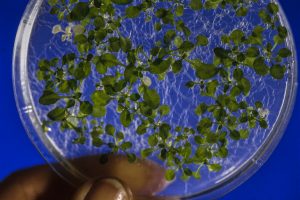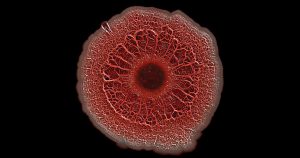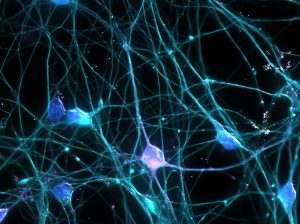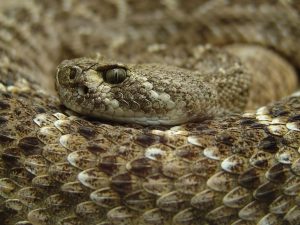Enter your address to receive notifications about new posts to your email.
Articles by Katie Pieper (29 results)
-
Transcription may be mutagenic in germline but not somatic tissues
When a mutation arises in an egg or sperm cell, it could be evolutionarily important. But if a mutation occurs in somatic tissue instead, the result could be cancer. Mutations in the germline and soma not only have contrasting consequences, they also arise at different rates that may reflect the balance of DNA damage and…
-
An extra chromosome that does double duty
Inheriting an extra chromosome can sometimes be disastrous, but in the September issue of G3, Linder et al. investigate a chromosome duplication that helps yeast survive harsh conditions. Yeast with an extra copy of chromosome IV better tolerate hydrogen peroxide exposure, largely thanks to an extra copy of a gene that detoxifies the chemical. This…
-
Missing kidney mutation found
It’s surprisingly common for babies to be born missing one or both kidneys; an estimated one in one thousand babies are born with a single kidney. Called renal agenesis, this condition is fatal if both kidneys are missing, and having just one can also lead to serious health problems like hypertension and early renal failure.…
-
A gene linked to human obesity also controls fat deposition in plants
There’s no such thing as an obese plant. But that doesn’t mean plants can’t teach us something about fat. In the September issue of GENETICS, Ducos et al. show that a protein that controls fat accumulation in humans has a similar function in Arabidopsis. They also find that the human and plant proteins may be…
-
Switching biofilm formation on and off in yeast
When a group of microorganisms needs to stick together, they build a biofilm. The cells cement themselves together onto a surface, forming durable structures that are notoriously hard to remove. In a medical setting, biofilms can contribute to dangerous antibiotic resistance. In the August issue of G3, Cromie et al. use a yeast model to…
-
Gene flow from crops into weeds depends on genome location
Even though domestic plants usually appear radically different from their wild relatives, they are often still able to interbreed. For transgenic crops carrying traits like herbicide resistance, this flexibility could pose a problem if they were to pollinate weedy relatives nearby. In the July issue of GENETICS, Adamczyk-Chauvat et al. examine the extent to which…
-
How the genetics of seizure susceptibility changes over time
Epilepsy is characterized by recurrent seizures, often with no immediately obvious cause. In the August issue of G3, Ferland et al. use a genome-wide association study in mice to show that after multiple seizures, the genetic basis of seizure variation shifts from previously identified genomic regions to new ones. This research shows that the genetic…
-
Fast-evolving female-biased genes defy expectations in mosquitoes
Genes involved in male reproduction tend to evolve rapidly. This has been observed in many different species and is thought to be due to sexual selection as males compete over mating opportunities. But in the August issue of GENETICS, Whittle and Extavour present results that flip this paradigm upside down. They find that in the…
-
Revisiting Waddington: A new explanation for an old experiment
In the 1940s, C. H. Waddington discovered a peculiar phenomenon in fruit flies: traits could appear in response to environmental stress in an individual’s lifetime and then be passed down to future generations. Waddington proposed that this wasn’t the inheritance of acquired traits, but actually due to pre-existing genetic variation that had no effect until…
-
Lineage specific retrotransposons shaped the genome evolution of domesticated rice
Rice is one of the most important food crops on earth. Like many other plants, the genome of this critical global species is dominated by transposable elements—selfish genes that multiply themselves to the detriment of their host. In the June issue of G3, Zhang and Gao analyze the genomic long terminal repeat (LTR) retrotransposon content…
-
Venom holds clues to triggers of gene family expansion
They rattle as warning, but during the hunt their strike is silent and sudden. Any rabbit or mouse targeted by a rattlesnake is doomed—the snake’s bite carries a paralyzing venom. The toxins in this venom are proteins encoded by a large gene family that arose by gene duplication. In the July issue of GENETICS, Margres…

![Cross section of the ovary of an anglerfish. Photo by NIH Image Gallery via Flickr. [CC BY-NC 2.0]](https://s36063.pcdn.co/wp-content/uploads/2017/10/anglerfish_ovary770x-300x225.jpg)
![Photo by publicdomainpictures.net. [CC0]](https://s36063.pcdn.co/wp-content/uploads/2017/09/red-doubledecker_770x-300x199.jpg)
![Photo by Hey Paul Studios via Flickr. [CC BY 2.0]](https://s36063.pcdn.co/wp-content/uploads/2017/09/kidney_770x-1-300x233.jpg)







